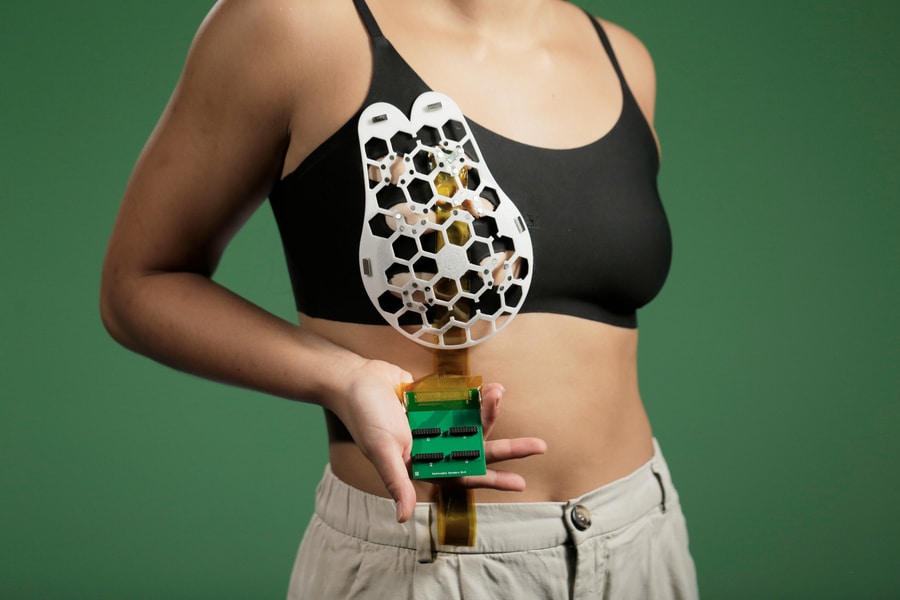When we talk about biomedical engineering, the first thought is to prothesis and, currently, there are many different kind of types: orthopedic, acoustic, neuroprosthesis and orthodontic one.
Over the years, the engineering has made great strides and today, probably, it will be possible to manage a prosthesis with the simple use of our own thought.
It is not telekinesis, of course, but it’s a device capable of interpreting the subtle electrical impulses of muscles, translating them into interpretable signals from the prosthesis.
A similar example was already explained in another article about the real possibility of regaining the use of “blocked” arts from paresis.
But here, the situation is different.
The story is about Jodie O’Connell-Ponkos, who had lost part of his right arm at the age of 16, while she was working at the factory in 1985.
Since then, as with the majority of people with amputations, despite the progress and the availability, Jodie had never changed his prothesis in 25 years.
Generally, it’s estimated that by 2007, 75% of users had despised implants with electronic components.
This could be due to the fact that, despite the best materials, more powerful engines and additional joints, implants were still based on the controls built in 1950.
In addition, the movement did not appear so natural, adding clumsiness to the simplest gestures.
Despite everything, Jodie decided to change and tried a new electronic prostheses, equipped with a device designed and produced by an engineering company of Chicago, the Coapt.
Thanks to its basic operation, that’s the recognition of subtle electrical signals of the muscles, not only Jodie was able to obtain more fluid, natural movements, but she wears it constantly, both during the equitation lessons, both to get a simple ponytail.
The Coapt attended the American Orthotic and Prosthetic Association conference in Boston in 2015 and just Jodie was its official promotional organization.
The device is compatible with the 5 main implants currently on the market.
The Chicago company has landed on the market in late 2013 and today are at least 200 people who are using their system, as confirmed by the co-founder and CEO, Blair Lock.
THE DEVICE
The device, first and unique in the world, is enclosed in a small black box and merges the sophisticated microelectronics with algorithms that use pattern recognition to decode the electrical impulses of the arm, as a bridge between the thinking and the prosthesis to which it is connected.

www.medtechintelligence.com
The muscles act as amplifiers for electrical signals which, alone, would be too weak to be received and decoded
“And they contain a” symphony “of information”
asserts Lock, where the recognition software can translate the amplified signal in a precise movement.
A second upcoming project sees the company committed to the creation of a second-generation device, smaller than the current one, but not only that: it also involves the development of an implantable technology, although the CEO of Coapt, of course, has not released details about technology.
The Coapt is not alone in wanting to improve the way in which you can live implants.
The John Hopkins’ Modular Prosthetic Limb, MPL (also uses the signal recognition) aims the true “translation of moving thoughts”, as claimed by the chief engineer for the research and development of the Johns Hopkins Applied Physics Laboratory, Mike McLaughlin.
In addition, there is also the DEKA Research’s “Luke Arm,” which name is taking by the Luke Skywalker of the famous Star Wars saga, which has not only used the system developed by Coapt, but also boasts a wireless system for motion control through the ‘use of the feet, thanks to a kind of joystick.
Despite considerable progress, a completely smooth and natural movement is still far from being achieved.
The real obstacle is not technology (suffice it to think that the MPL owns fewer than 26 joints and 200 motion sensors), but rather the bandwidth needed for measuring electrical signals.
“If we move an arm, about 500 million neurons are involved, and right now, the best we can do is reflect only a few hundred of these neurons”
explains McLaughlin.
“In our mind a lot of things happen, and we have a very limited ability to observe”.






